The height of the window sill from the floor in a private house, apartment and balcony: standards
According to the standard, the height of the window sill from the floor usually ranges from 70 to 90 cm. But you need to keep in mind that this is a purely practical and not a strictly regulated norm. Today, the indicator is not specified in the requirements of building codes or GOSTs. However, it is customary to focus on the specified range, which can be changed taking into account various factors described in this article.
The content of the article
Height requirements according to GOST and SNiP
It should be noted that the height of the window sill from the floor is not strictly regulated by any document. However, in practice, generally accepted standards have long been established and are still used today. On average, the height of the window sill ranges from 700 mm to 900 mm, depending on the type of house:
- Stalinka (antique houses with high ceilings, large window openings, spacious entrances, convenient layout): 700 mm, i.e. 70 cm. In this case, the width is about 50-60 cm, and the battery is installed in a special niche.
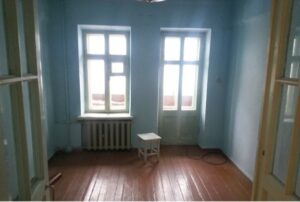
- The standard height of the window sill from the floor in the most massive houses of the USSR era (in Khrushchev) is 800 mm. Although in some cases it could be larger - up to 900-920 mm. A niche was also allocated for the battery.
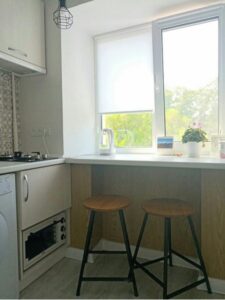
- The distance from the floor to the window sill in modern houses (new buildings) is usually greater and amounts to 900 mm. Panoramic windows are often used, which start directly from the floor, as shown in the photo.
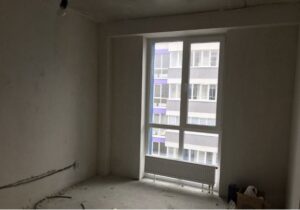
- In schools and medical institutions, the height is approximately the same as in old houses - 700-800 mm.
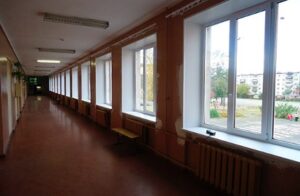
- On the staircase, the indicator is increased for safety reasons to 900 mm.

- The height of the window sill from the floor in a private house can theoretically be any, but usually builders follow the generally accepted standards described above.
However, some parameters are regulated by regulations. For example, there is a standard height to the window sill on the balcony. In accordance with the standards of SP 70.13330, approved in 2012, the minimum value for balconies should be 1200 mm, which is due to safety requirements.
As for loggias, the restrictions here are less stringent - usually the parameter is 500-600 mm. In new buildings it can be higher, which is why apartment owners have to raise the floor level by laying insulation and finishing materials. But again, if we are talking about the height of the window sill in a private house (low-rise), then the owner has the right to independently choose one or another value.
When determining the location of the window from the floor, you should also take into account the requirements of regulatory documents regarding other indicators of the window sill. Thus, GOST 30971, approved in 2012, regulates the following rules:
- the window sill should fit as closely as possible to the opening while maintaining complete tightness;
- it must be resistant to mechanical loads - constant and variable (for example, impact);
- Deflection (deformation) is allowed within 2.0 mm per meter of length.
In practice, the height of the window sill on the balcony is determined depending on the purpose of the room:
- In living rooms, the figure may be standard or significantly less. In spacious rooms, panoramic windows are often installed with a minimum window sill height.For example, it can be only 20-40 cm or less. It is also possible to change the width of the surface - this is often done to create a comfortable place where you can read, place flowers and thus use additional space.
- In nurseries, the size from the floor to the window sill is 70 cm. On the one hand, this is not very high for a child, and on the other, it ensures safety for babies. If made too low, there is a risk that the baby, left unattended, will crawl out and fall.
- For bedrooms, the figure is not particularly important - it ranges from 70 to 90 cm, depending on the type of house. Moreover, they usually make a narrow window opening here to reduce heat loss, which is especially important for residents of the northern regions.
- The height of the window sill in the house in the kitchen is also about 70-90 cm. It is to this parameter that the similar parameter of the countertop is adjusted. This meets not only aesthetic, but also practical requirements - you can use an additional surface, install a microwave or other equipment.
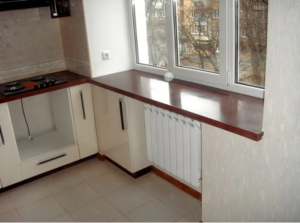
Other requirements for the window sill
Since a heating radiator is almost always placed under the window, there are several important requirements associated with it:
- the interval from the wall to the radiator should be at least 8 cm, which is important to take into account when repairing the heating system (and 10-15 cm is recommended);
- the window board is placed at a height of 70-80 cm, taking into account the dimensions of the radiator;
- the angle of inclination of the window sill towards the inside of the room should be 1-1.5 degrees;
- battery length within 300 cm (in most cases less, the limitation applies mainly to non-residential premises);
- the radiator should be positioned strictly in the center - the midline of the window should divide it into 2 equal halves (lengthwise);
- the width of the battery must be at least 70% of the total window opening (for example, at least 70 cm if the opening is 100 cm);
- interval from the floor 10 cm;
- the same interval should be from the protruding part of the window sill, as shown in the diagram.
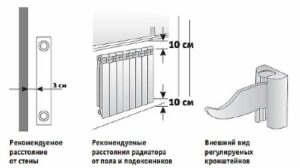
Window sill projection requirements
As already mentioned, the height of the window sill is not regulated by the SP (Code of Rules) and other documents. However, there are certain practical requirements for all its parameters, including protrusion. It should be noted right away that the protruding edge is optional. It is mounted for only one purpose - to remove some of the heat from the radiator.
If there is no small protruding part, then the warm air immediately rises up to the ceiling, as well as to the window itself. Here, due to the cold glass surface, it will quickly form condensation, which will have a bad effect on both the window opening and the microclimate of the room.
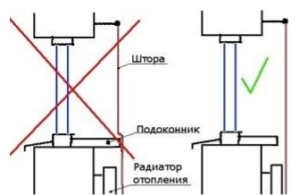
On the other hand, if the protrusion is too large, it will impede the normal movement of air. Then the radiator and nearby surfaces will begin to overheat, and the room will not receive enough heat. Therefore, in most cases, not only the standard height of the window sill from the floor in the apartment is taken into account, but also the size of the protrusion. Again, there are no strict requirements, because a lot depends on the depth of the niche, the design and location of the radiator. In practice, it is customary to maintain a range of 50-70 mm, sometimes it is less, rarely more.
Thus, according to the standard, the window sill from the floor is located in most cases at a height of 700-900 mm. But since this is a conditional norm, the parameters may vary greatly.The height is determined when designing a house, taking into account the specific purpose of the room, placement of the battery, wall material, climate in the region and other factors.





